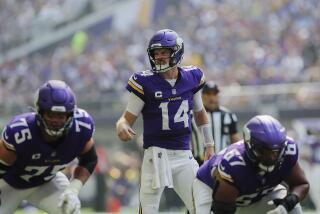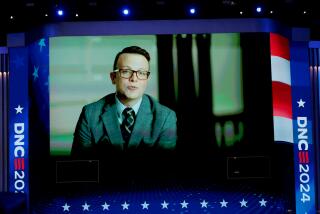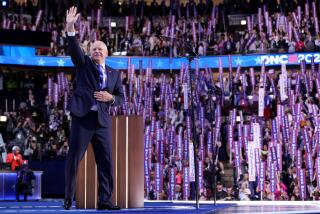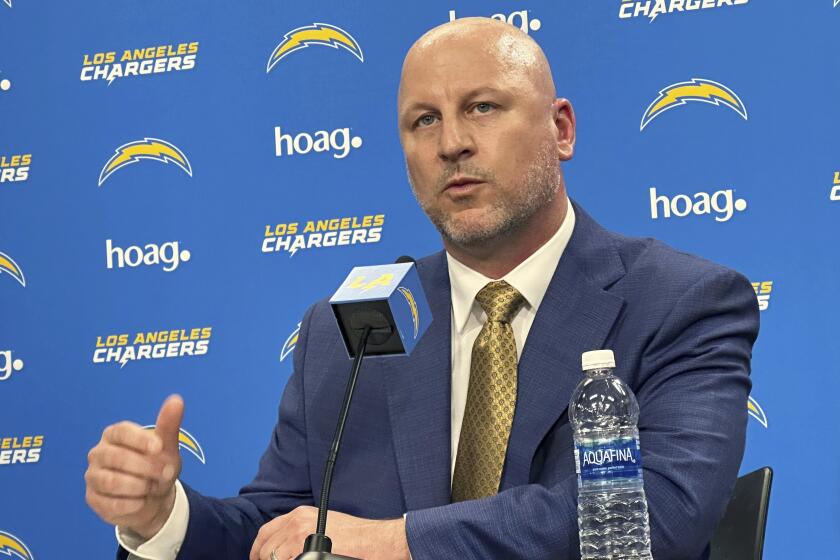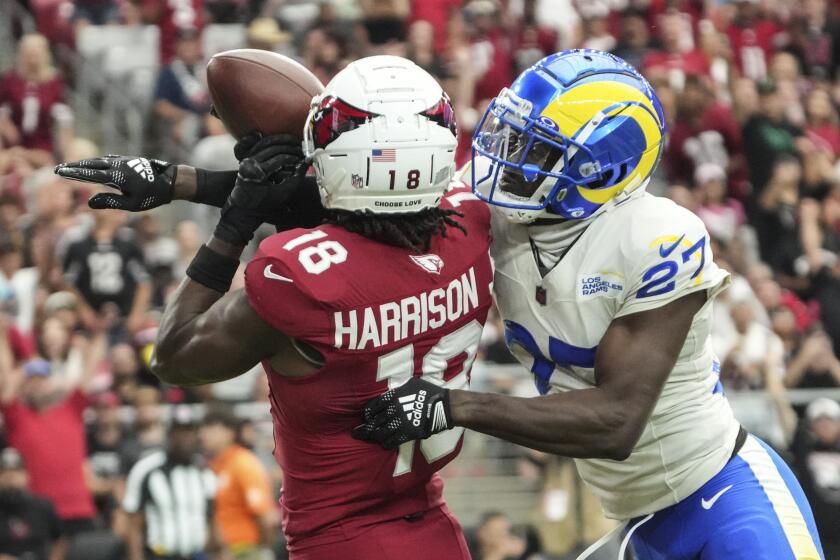Living legend
PALO ALTO — Six weeks ago, Bill Walsh was near death. He couldn’t eat and barely had the strength to speak. Leukemia had ravaged his body and left him hospitalized at Stanford University Medical Center, where doctors urgently filled him with chemotherapy drugs to fight the cancer and antibiotics to control his raging infections.
Walsh, 75, who coached the San Francisco 49ers to three Super Bowl championships from 1979 through ‘89, has been battling the disease since being diagnosed in 2004. It is an illness he disclosed only last month.
In early November, he was convinced his life was close to an end.
“I was really down,” he said. “The doctors were talking in terms of days or weeks.”
But his cancer is unpredictable, and he has stabilized and improved in recent weeks. He still spends three days a week at the hospital receiving intravenous treatments, and wears a catheter implanted in his forearm for injections. He is pale and not as sturdy as he was a few years ago, yet he hasn’t allowed the disease to dominate his life.
In a wide-ranging discussion with The Times this week on the Stanford campus where he still maintains an office, Walsh talked about his legendary career, his triumphs and regrets, his feelings about today’s NFL, how a fellow Hall of Fame coach tried to keep him out of the league, and the difficulty of confronting his own mortality.
Asked if he fears dying, Walsh said he doesn’t, “but the last thing you want when you’re dying is to be suffering. I’ve discussed that with my physicians.... I just don’t want to cling to some form of life.”
The disease and treatment have sapped Walsh’s energy, so much so that when he stands he often seeks something to lean against. And while his voice is weaker than in the past, his mental energy is undiminished.
His greatest worry throughout the ordeal, he said, has been the well-being of his wife, Geri, who suffered a major stroke seven years ago. In recent weeks, Walsh and their children, Craig and Elizabeth, have planned out the details of her care in case he’s not around. More than anything, that has helped put his mind at ease.
“Once that was resolved,” Walsh said, “then I sort of resolved in my mind to whatever happens is certainly acceptable to me. I’ve lived a good life. A lot of wear and tear, a lot of disappointment in my life, but now that it’s in my last cycle, I feel OK about it.”
On his best days, he holds out hope he’ll one day return to the golf course or spend some time at his beach house near Monterey. On most days, he’s simply happy to be alive.
“Twenty-five years ago I wouldn’t be here now,” he said. “It’s because of advances in medicine and specialization in what I have. And there are people in the hospital who are worse than I am. They struggle, and I struggle. But the final point is right now I’m feeling better. I feel sort of normal right now. I don’t remember what normal was, it’s been so long ago, but right now I’m functioning OK.”
The interview was conducted in a conference room in the Stanford athletic department, a place Walsh knows well. Twice the school’s head football coach, Walsh served as interim athletic director last year. He also had significant say in this week’s hiring of Jim Harbaugh as new coach.
In fact, as Harbaugh entered the auditorium at his introductory news conference, the only hand he shook was that of Walsh. Later, Harbaugh confided that since receiving a congratulatory voice mail from him, “I’ve tried to figure out some way that I could get that message off of my phone and onto a tape that I could keep for the rest of my life.”
Everyone, it seems, is holding fast to their own personal Walsh moment or memory. He has received countless phone calls, cards, letters and words of kindness from people he touched over the years. Those have come from all over the country, and particularly the Bay Area, where Walsh also worked as an assistant coach for the Oakland Raiders and California, and played quarterback for Hayward High, San Mateo Junior College and San Jose State.
In the NFL, what was once a Walsh coaching tree of disciples is now closer to a forest. Among those who worked under him: Mike Shanahan, Mike Holmgren, Andy Reid, Tony Dungy, Marvin Lewis, George Seifert, Dennis Green, Ray Rhodes, Brian Billick and Jon Gruden. A coaches who’s who. But his reach extends well beyond that.
“You can go through this league and almost every corner of every team is touched by Bill Walsh,” said Eddie DeBartolo, former 49ers owner. “I’m talking about head coaches to coordinators to sons to cousins. I tried to sit down and do his family tree of football once and I just quit. No one, and I mean no one, has put a mark and touched pro football in the way that Bill Walsh has. Calling him an icon isn’t even doing him justice.”
In late October, DeBartolo flew across the country to have lunch with Walsh at his Woodside home. They sat on his deck, opened a bottle of wine and reminisced about their three decades together. They talked about the times they went to Super Bowls just to watch. They laughed about old friends and the early years, back when they transformed the franchise from one of the league’s worst to its best.
DeBartolo, who lives in Tampa, Fla., and plans to make another trip out to see Walsh next week, said he recently got a call from former 49ers receiver Dwight Clark, who said he stopped by the hospital and picked up his old coach to drive him home. On the way, Walsh spotted a favorite Mexican restaurant and said he wanted to stop in for a margarita, which they did.
“Hearing that made me feel great,” DeBartolo said. “Like it’s Bill again.”
Walsh’s cellphone seldom stops ringing. His secretary, Jane Walsh, who’s not related to him but has worked with him for 16 years, is constantly juggling his schedule to fit everyone in. Bill Walsh is the type who has a hard time saying no to anyone. Now, he’s feeling the love and admiration pour in.
“Some of the letters I’ve gotten from some of my former players are tear-jerking,” he said. “Some of them are from former Stanford players that I coached when I was here, NFL players, guys that weren’t the logical guys to call me have called to freely state how they feel. And how they feel is beautiful.”
He said the players could appreciate his approach to coaching, one that permeated the organization.
“There’s a style of coaching that is not based on forcing a player to test his courage every day in practice, or force a player to prove he’s a man in practice,” he said. “The whole idea is to prepare for a game. It’s that style, the length of practices, what you practice, when you practice. All those kinds of things are sort of the legacy that I take pride in.”
It’s when Walsh talks about his career and his passion for football that his voice perks up and some color returns to his cheeks. He says watching Philadelphia quarterback Jeff Garcia -- a player he essentially discovered -- “puts life back into my interest in pro football. I can’t wait to see him play.” He takes vicarious thrill in watching Pete Carroll, one of his many proteges, walk the USC sidelines.
“He’s such a terrific personality, and he’s a total football guru,” he said of the Trojans’ coach. “He’s willing to give you his opinion and share with you, ask questions. You ask questions of him. He’s just absolutely outstanding. If you want to say great, he’s great.”
Just as there are people in football who invigorate Walsh, there are those who frustrate and disappoint him. One of those is Dallas receiver Terrell Owens, with whom Walsh worked extensively when the future star was beginning his career as a 49ers receiver.
“He doesn’t know what he’s become, he just doesn’t know,” Walsh said. “He may never appreciate it. He probably will 20 years from now, maybe he’ll look back on it. It’s too bad he’s such a distraction to everybody. It’s not fair to his teammates. He’s a great athlete, but it’s just not fair to everybody to indulge yourself at their expense.”
Although Walsh is widely regarded as a supreme offensive strategist, among the most creative minds the game has ever known, he took particular pride in his ability to recognize and assemble defensive talent. Among the defensive stars on those 49ers teams were players such as Ronnie Lott, Fred Dean, Jack “Hacksaw” Reynolds and Charles Haley. Walsh said the 49ers’ defensive dominance in the 1980s was often underappreciated in all those championship seasons.
“I wanted to make sure we had the best defensive players in the league, and that’s what really would carry us,” he said. “We’d finish as high or higher in the defensive stats than we did on offense. Like our ’84 Super Bowl against Miami, they came in with a very high-flying offense -- of course, ours was very good too -- but defensively, they weren’t quite as talented as we were.
“I could tell when the two teams warmed up that we were going to win the game. We just had better athletes. And our defense dominated that game and Dan Marino. And offensively, of course, we did too. But the defense was the key.”
The 49ers beat the Dolphins, 38-16, but Walsh now says the outcome should have been more lopsided. He said that out of respect for Miami Coach Don Shula, he chose not to score a final touchdown when he had a chance.
The play in question came on fourth and one at the Miami two with less than three minutes remaining. Walsh said quarterback Joe Montana “could have walked into the end zone” on a keeper, but instead the coach called a handoff up the middle to Roger Craig, a play the 49ers had run several times in the game and that Miami’s defense was prepared to stop.
“Nobody knows I eased up except for me and the people around me on the phone and everything,” Walsh said. “I called a play that wasn’t going to work.”
Even now, Walsh can recall the down-by-down details of that game and many others. He’s a notorious perfectionist who was not only haunted by the rare defeat but nitpicked and second-guessed his decisions in the aftermath of victory.
“There are all kinds of regrets,” he said. “That’s what keeps competitive people going is the regrets. It’s not the successes. The things you remember are the games you lost and why you lost them and what you could have done.... After a game, I’d go home and I’d sleep until about 3 in the morning. Then, boom, I’d relive the game and think, ‘Why did I do this? How could I ever... why? This is ridiculous!’ So you just don’t want to lose. You’ll do anything to avoid losing. That’s what drives you.”
A major factor in Walsh’s success as coach of the 49ers was his relationship with DeBartolo, who gave him the money and freedom to sign the players he wanted. That was a rarity then and is all but unheard of now, especially with the advent of the salary cap in the early 1990s. Walsh and DeBartolo worked in lock step, assembling teams that won more than any others in the ‘80s and had only two losing seasons in the decade.
“The other clubs would get a report on a player and the coach would take it to the personnel director and he’d take it to somebody else,” Walsh said. “Sooner or later, there’d be somebody that’d say, ‘No, don’t bother.’ ” And it would die. When it was me coaching and managing, I’d say, ‘Good. I’ll take him.’ ”
Not everyone in the NFL had such faith in Walsh’s decisions. He was a Cincinnati Bengals assistant for seven seasons under legendary coach Paul Brown but was passed over in favor of Bill “Tiger” Johnson when Brown retired in 1975. Walsh, who subsequently resigned, said Brown “worked against my candidacy” to be a head coach anywhere in the league.
“All the way through I had opportunities, and I never knew about them,” he said. “And then when I left him, he called whoever he thought was necessary to keep me out of the NFL.”
Was it jealousy?
“I can’t say,” said Walsh, who didn’t get his first NFL head-coaching job until he was 47. “He did that to other people too, it wasn’t just me. But I was probably the most blatant one.”
Of course, Walsh got the last laugh. His 49ers never lost to the Bengals, beating them five consecutive times, including twice in Super Bowls.
“By the time we got to those games, I didn’t even think of the history,” he said. “We were just playing another team. But when the plane took off the first time we beat them in Cincinnati, I looked back down and I was euphoric. I just sat there quietly. It was snowing down there. Lights on. We were gone.”
He eased back in his chair and smiled, lost for a moment in the memory.
*
(BEGIN TEXT OF INFOBOX)
The 49ers’ decade
*--* SUPER BOWL XVI
*--*
Jan. 24, 1982
San Francisco 26, Cincinnati 21
* Ray Wersching’s Super Bowl record-tying four field goals and Joe Montana’s controlled passing helped give Walsh his first Super Bowl win. The 49ers built a 20-0 halftime lead, but the Bengals rebounded to make it close in the second half. Cincinnati compiled 356 yards to San Francisco’s 275, which marked the first time in Super Bowl history that the team that gained the most yards from scrimmage lost the game. Montana, the game’s most valuable player, completed 14 of 22 passes for 157 yards.
*--* SUPER BOWL XIX
*--*
Jan. 20, 1985
San Francisco 38, Miami 16
* Walsh’s 49ers got their second Super Bowl title with a dominating defense that tamed Dan Marino and Miami’s potent passing attack. The Dolphins held a 10-7 lead at the end of the first quarter, which represented the most points scored by two teams in an opening quarter of a Super Bowl. However, the 49ers used excellent field position in the second period to build a 28-16 halftime lead. San Francisco’s 537 total net yards bettered the previous Super Bowl record of 429 yards by Oakland in Super Bowl XI. The 49ers also held a time-of-possession advantage over the Dolphins of 37:11 to 22:49.
*--* SUPER BOWL XXIII
*--*
Jan. 22, 1989
San Francisco 20, Cincinnati 16
* Walsh wrapped up his pro coaching career with another title over Cincinnati. The 49ers found themselves trailing the Bengals late in the game, 16-13. But Montana orchestrated an 11-play, 92-yard drive, with the decisive score coming on a 10-yard pass to John Taylor with 34 seconds remaining.
*
Source: superbowl.com
More to Read
Go beyond the scoreboard
Get the latest on L.A.'s teams in the daily Sports Report newsletter.
You may occasionally receive promotional content from the Los Angeles Times.
